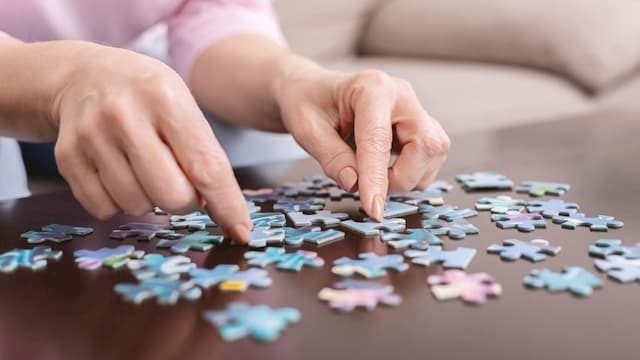Doing a Puzzle is Good for Morale and… Health

The jigsaw puzzle has more virtues than it looks … Ideal for relaxing, especially in periods of confinement, this game stimulates our intellectual faculties. Everyone loves it!
Landscapes, historical monuments, nature, animals, works of art … The jigsaw puzzle declines the themes as their number of pieces, by hundreds and even by thousands.
This patience game appeals to all generations. You can play it alone to relax as a group for family fun or share a fun and educational activity with children from the age of 2 or 3 years.
A jigsaw puzzle break
It is a pleasant pastime, both creative and relaxing, especially in times of confinement. It allows you to stay focused and to dispel your dark thoughts. For all these reasons, it is particularly appreciated by seniors looking for relaxation and a moment of escape rhyme with concentration.
In the era of “IT all”, this is the opportunity to let go of screens to assemble the pieces of a game invented in the XVIII th century by a British cartographer to facilitate the learning of geography. The verb “to puzzle” in English means “to be perplexed”. A real “puzzle” as Quebeckers call it!

Brain skills in action
The practice of the puzzle is international and it is a German researcher, specialist in neurology at the University of Ulm, who carried out a recent study near a panel of a hundred seniors with an average age of 63 years . He found that solving puzzles makes it possible to work several brain, visual and spatial skills: perception, flexibility, working memory, speed, reasoning and the mental rotation which is exerted when the player seeks in which sense he must lay the piece. In conclusion :
“Doing a puzzle allows you to relax while regularly stimulating the mind, which helps to maintain our intellectual faculties. ”
To each his own puzzle
The complexity of a puzzle increases with the number of its pieces. Enthusiasts prefer formats of 1,500 pieces and beyond.
For older people, editors like Educa offer models with 300 pieces whose size is twice as large (5.2 x 3.5 cm) than conventional pieces, in order to adapt to vision problems. In rigid cardboard, they are also easier to handle.
The Norman creator and distributor Agoralude goes further by designing puzzles of 48 to 72 wooden pieces of 9 cm x 8 cm, adapted to people suffering from cognitive disorders.
Enjoyed this? Get the week’s top France stories
One email every Sunday. Unsubscribe anytime.


